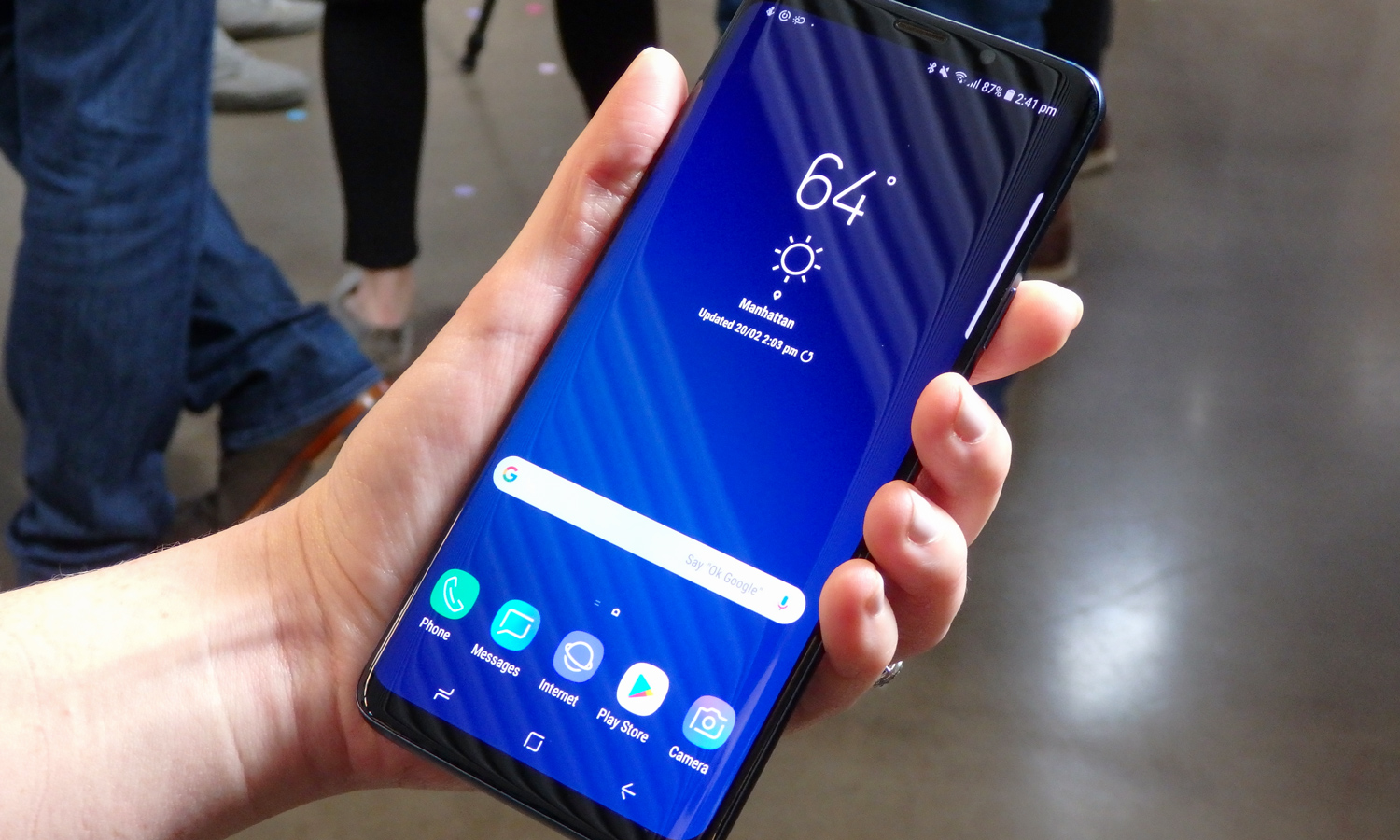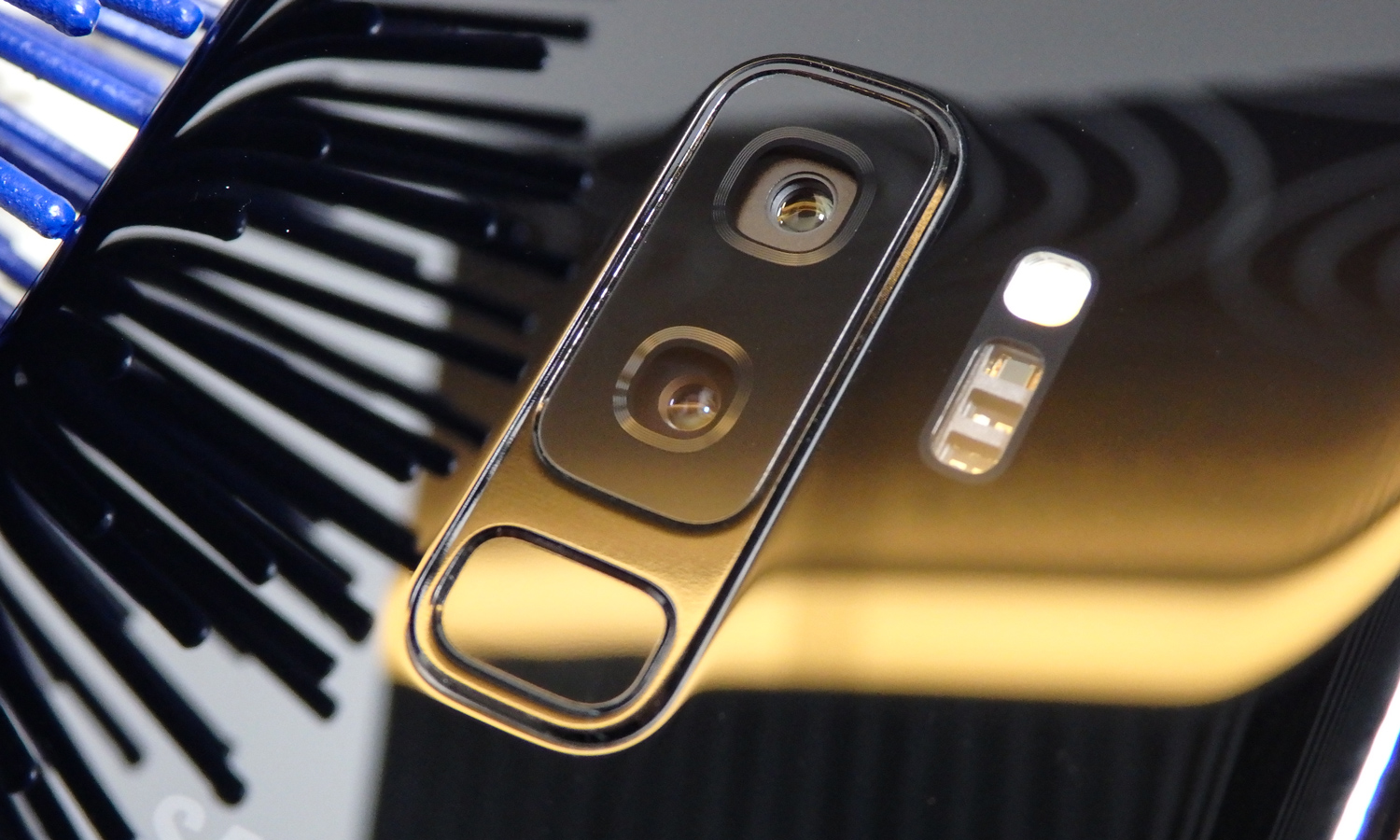Galaxy S9 Final Specs: Here's What You Get
Forget the rumors. The Galaxy S9 and S9+ are here, and here's a rundown of the new phones' specs.
Samsung's Galaxy S9 and S9+ are finally here.

The phones, which are available for pre-order now before they go on sale March 16, cost $720 and $840, depending on where you buy them from, and we're expecting more S9 deals to emerge as we get closer to the release date.
But what exactly are you getting for your money? Here's an overview of the specs for both the Galaxy S9 and S9+. For a more detailed look at the new phones, check out our in-depth review, complete with benchmarking tests.
| Galaxy S9 | Galaxy S9+ | |
| Price | $720 | $840 |
| Display | 5.8 inches (2960 x 1440) | 6.2 inches (2960 x 1440) |
| CPU | Snapdragon 845 | Snapdragon 845 |
| RAM | 4GB | 6GB |
| Storage | 64GB | 64GB |
| microSD | Yes, up to 400GB | Yes, up to 400GB |
| Rear Camera | 12-MP Super Speed Dual Pixel (f/1.5, f/2.4) | 12-MP Super Speed Dual Pixel (f/1.5, f/2.4); 12-MP telephoto (f/2.4) |
| Optical zoom | No | 2x |
| Front Camera | 8-MP (f/1.7) | 8-MP (f/1.7) |
| Water resistance | IP68 | IP68 |
| Battery | 3,000 mAh | 3,500 mAh |
| Battery Life | Untested | 10:59 |
| Audio | AKG stereo speakers, 3.5 mm headphone jack | AKG stereo speakers, 3.5 mm headphone jack |
| Software | Android 8.0 | Android 8.0 |
| Colors | Midnight Black, Coral Blue, Lilac Purple | Midnight Black, Coral Blue, Lilac Purple |
| Size, Weight | 5.8 x 2.7 x 0.33 inches, 5.8 ounces | 6.2 x 2.9 x 0.33 inches, 6.7 ounces |
Design and Displays
The Galaxy S9 and Galaxy S9+ don't look much different than their predecessors — and that's alright. We loved the design of the Galaxy S8 and S8+, thanks to their Infinity Displays that nearly go from edge to edge, as well as the sharp 2960 x 1440-pixel resolution on both phones. The bezels are a little bit narrow on the top and bottom of the new phones.
MORE: Galaxy S9 vs. Galaxy S8: Here's What's Changed
One tweak that will please is that Samsung moved the fingerprint reader beneath the camera lens, so it's easier to reach without looking. This sensor was to the right of the lens on the S8.
The S9 and S9+ sport Super AMOLED panels of 5.8 inches and 6.2 inches, respectively, and Samsung has upped the brightness on the new phones over their predecessors.
Get instant access to breaking news, the hottest reviews, great deals and helpful tips.
Cameras
Samsung trumpeted the "reimagined" cameras in the Galaxy S9 and S9+, leading up to the phones' launch, and it delivered. The main camera in the new phone is a 12-megapixel Super Speed Dual Pixel with a variable aperture that adjusts depending on conditions. (In low light, for example, you'd use the wide f/1.5 aperture.) The S9+ adds a second 12-MP telephoto lens, allowing the phone to offer a 2x optical zoom.

Both cameras offer a Super Slo-Mo feature, where you can slow video shot by the camera to 960 frames per second at 720p resolution. Even better, the phones can automatically sense motion and activate the feature on their own.
We've got a more detailed look at the major changes to the Galaxy S9's cameras.
CPU, RAM and Storage
Both phones feature Qualcomm's Snapdragon 845 processor, which is 25 percent faster than the Snapdragon 835 chip in the Galaxy S8. It also offers several other advantages.
For one, the 845 processor boasts an improved image signal processor, which means the S9 and S9+ captures images more quickly, as well as shoot slow-motion video at 480 frames per second. The 845 chip also enables better HDR photos. The S9 is more competitive with the Pixel 2 than the S8 was in terms of photo quality, but Google's latest phones and the iPhone X sport better cameras than the S9+, even with Samsung's improvements.
When it comes to speed and performance, the iPhone X's A11 Bionic chip easily bested the S9+ in our testing, which included a Geekbench 4 test of overall system performance and a video-editing test where we exported a 2-minute 4K video file.
The Galaxy S9 and S9+ offer 4GB of RAM and 64GB of storage. You can use the microSD card slot to boost capacity to 400GB, which no iPhone offers.
Stereo Audio and Headphone Jack
Despite rumors that Samsung might be ditching the headphone jack for the Galaxy S9 and S9+, it's still there, thankfully. Another welcome addition is the arrival of stereo speakers for both the Galaxy S9 and S9+, powered by AKG. Samsung has trailed behind the likes of HTC when it comes to sound quality, so it's great to see the company step up its game here.
Battery Life
The Galaxy S9 and S9+ pack the same size batteries as their predecessors — a 3,000 mAh battery in the S9 and ta 3,500 mAh battery in the S9+. Qualcomm promised that the GPU in the Snapdragon 845 chip has 30 percent better power efficiency thanks to four dedicated A55 efficiency cores, but the S9+ lasted 10 hours and 59 minutes compared to the 11 hours and 4 minutes reached by the S8+.
Software
It's safe to say that the Bixby assistant on the Galaxy S8 didn't set the world on fire. In fact, many lobbied for Samsung to allow users to re-map the Bixby button to another function. However, Samsung made some improvements to Bixby, particularly with Bixby Vision, which can now provide real-time translation of signs and other text.
An AR Emoji feature turns your face into an animated character, a feature we found more creepy than delightful in our time with the S9+.
Outlook
On the surface, the specs for the Galaxy S9 and Galaxy S9+ don't look that different from the Galaxy S8 and S8+. The camera marks the biggest change, of course, followed by Bixby improvements, better audio and that new AR Emoji capability.
Then again, Samsung didn't need to make radical changes. A much improved camera, smarter software, faster processor, longer battery life and beefier audio helps Samsung retain the title of best Android phone. The Galaxy S9+ lags behind the iPhone X when it comes to best overall smartphone, but the chasm is closing.
Mark Spoonauer is the global editor in chief of Tom's Guide and has covered technology for over 20 years. In addition to overseeing the direction of Tom's Guide, Mark specializes in covering all things mobile, having reviewed dozens of smartphones and other gadgets. He has spoken at key industry events and appears regularly on TV to discuss the latest trends, including Cheddar, Fox Business and other outlets. Mark was previously editor in chief of Laptop Mag, and his work has appeared in Wired, Popular Science and Inc. Follow him on Twitter at @mspoonauer.

